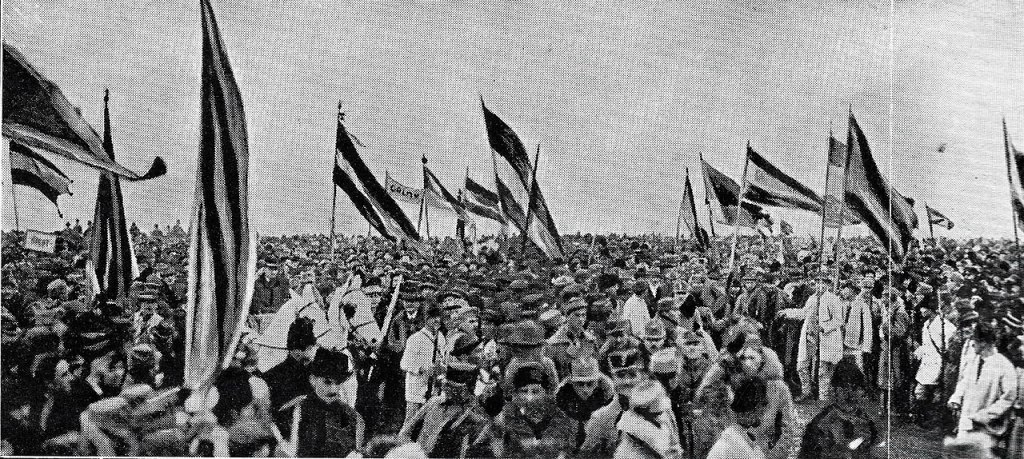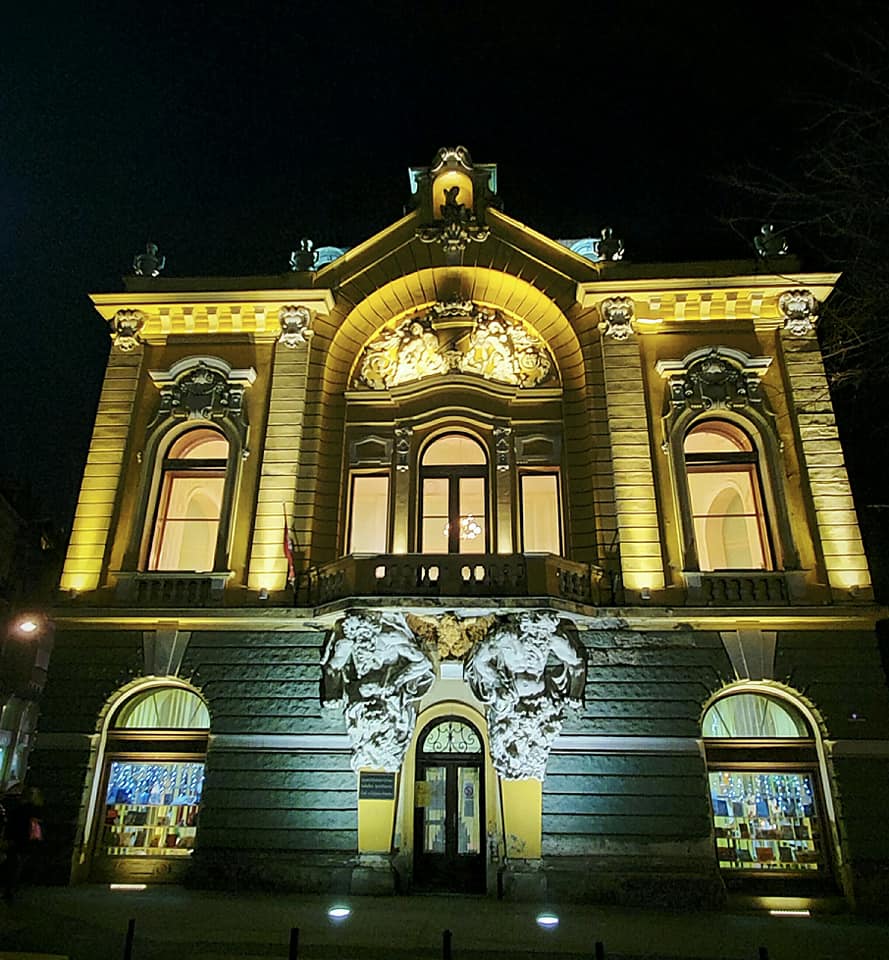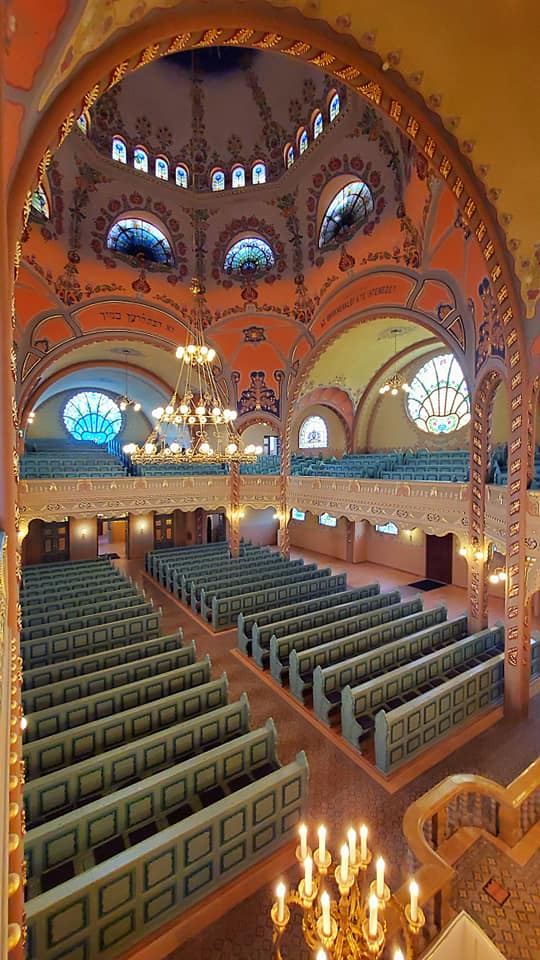Sometimes the only place left to go is home. As my armchair travels around the lost cities beyond Hungary’s borders nears the end, I began to look for the way home. There was one problem, I had trouble finding my way home. Was home back inside Hungary’s borders in Budapest where my itinerary started? Or was home outside those borders in the lost cities that I found a source of endless fascination. In my imagination, I felt more at home in the lost cities because they were the places still fraught with tension. Places where history was palpable, and ghosts could be discovered in broad daylight.

Standing tall – City Hall in Szeged
Going Home – Subotica To Szeged
When I started developing the lost cities’ itinerary, I planned on ending the journey where it first began at Keleti Station in Budapest. Something about that slowly came to seem not quite right. I had drifted to so many places beyond Hungary’s borders, that heading back into its heart did nothing to excite me. I wanted to stay on the fringes and walk along the edges. There were old frontiers still worth exploring both inside and outside Hungary’s current border. That is why I am choosing one of the cities that ended up on the right side of Hungary’s border as the final stop. Szeged is not far from my final stop in Subotica and manages to surpass it in architectural wonders. Subotica and Szeged are not far apart. Both cities suddenly found themselves on the frontier. They have much in common and are distinctly different. For Hungarians, Szeged is the dream, Subotica the reality. That sense of bipolarity was something that millions of ethnic Hungarians came to know all too well when the Treaty of Trianon went into effect.
Finding home on this journey was not only pertinent to me. It also recalled the lost cities’ history. I was following in the footsteps of ethnic Hungarians. Millions had suddenly found themselves outside the borders of Hungary after the Treaty of Trianon took effect. Their lives and livelihoods were in limbo. They were left with two choices between bad and worse. They could either leave the only life they had ever known behind, or they could stay and try to make the best of what would be a very difficult situation. Some of them went back to Hungary because they had little choice as ethnic Hungarians were threatened, attacked, or faced discriminatory policies. Others stuck it out and managed to keep their lives afloat in the turbulent years ahead.
Trianon was not the start of problems for ethnic Hungarians in Transylvania, Banat, Vojvodina, and southern Slovakia. Their problems began as the worst conflict up to that point in world history was entering its most chaotic phase. World War I did not end in Eastern Europe the way it did in Western Europe. By the time the armistice was signed in France on November 11, 1918, Austria-Hungary had already disintegrated twelve days earlier. This led to an extension of the war, albeit on a smaller, but more chaotic scale. The front lines were blurred with civilians caught in the crossfire. Hungary battled Czechoslovak, Romanian and Serbian forces on different fronts. The Romanian Army fought its way to Budapest before the victorious powers forced them to leave. Adding to the chaos was a revolution in Hungary that brought a communist government to power for six months in 1919. This did nothing to endear the Hungarians to the victorious powers. Territory was up for grabs. The strongest military force often proved decisive.

Flag waving = The Union of Transylvania with Romania is declared on December 1, 1918 (Credit: Samoila Marza)
Internal Exiles – Climate of Chaos
The Hungarian Army was in no condition during this time to take control of all the territory that historically had been part of the Kingdom of Hungary and administered as such during the Austro-Hungarian Empire. For all its faults, the Treaty of Trianon brought order to this chaos, but that was not until it went into effect on June 4, 1920. By then hundreds of thousands of Hungarians had fled back to the core territory of Hungary (the nation as it exists today). These refugees were especially conspicuous in Budapest. Housing was in short supply. Many of them were forced to live in railroad boxcars. Fear, anger, and resentment were pervasive. When a counter-revolution was conducted by right-wing Hungarian forces, paramilitary justice against real and perceived communists was brutal.
It is hard to imagine just how chaotic the situation was in Europe during this time. It is just as hard to imagine the violent upheaval that took place across Eastern Europe. The political, military, and economic situation in Hungary was one of the epicenters of volatility. Ethnic Hungarian refugees who fled to the core of Hungary found that peace was precarious and prosperity non-existent. Only after the counterrevolution led by Admiral Miklos Horthy took power was a sense of order restored. Those who opposed the regime were lucky to escape with their lives. Many of them did not.
Horthy’s regime was not strong enough to do anything other than take control of core Hungary. The cities in what had been the Kingdom of Hungary were all but lost. Trianon would finalize facts on the ground. The refugees would not be going home anytime soon, if ever. Their resentment over what they had lost would be one of the defining factors in Hungarian politics during the interwar period. Regaining the lost lands would become a top priority for the Horthy regime. In that effort, they had the support of a populace seething with discontent towards socialists and Jews at home, and the successor states which took hold of Hungarian territory.

Traumatic Times – No Direction Home
Anyone who has ever suffered through a crisis in which they were forced to leave their home knows the psychological trauma and physical hardship it can cause. When there is no going back to the way things were and no clear path forward, people often turn inward on themselves. The same is true for nations. This happened to Hungary, as it did to the ethnic Hungarian refugees who fled there because they had no other place to go. Home had become a nebulous concept. In the lost cities and lands ethnic Hungarians were suffering much the same thing. The difference was that they had stayed put.
Click here for: Anecdotal Evidence – The Wrong Side of the Border in Historic Hungary (The Lost Cities #14b)



